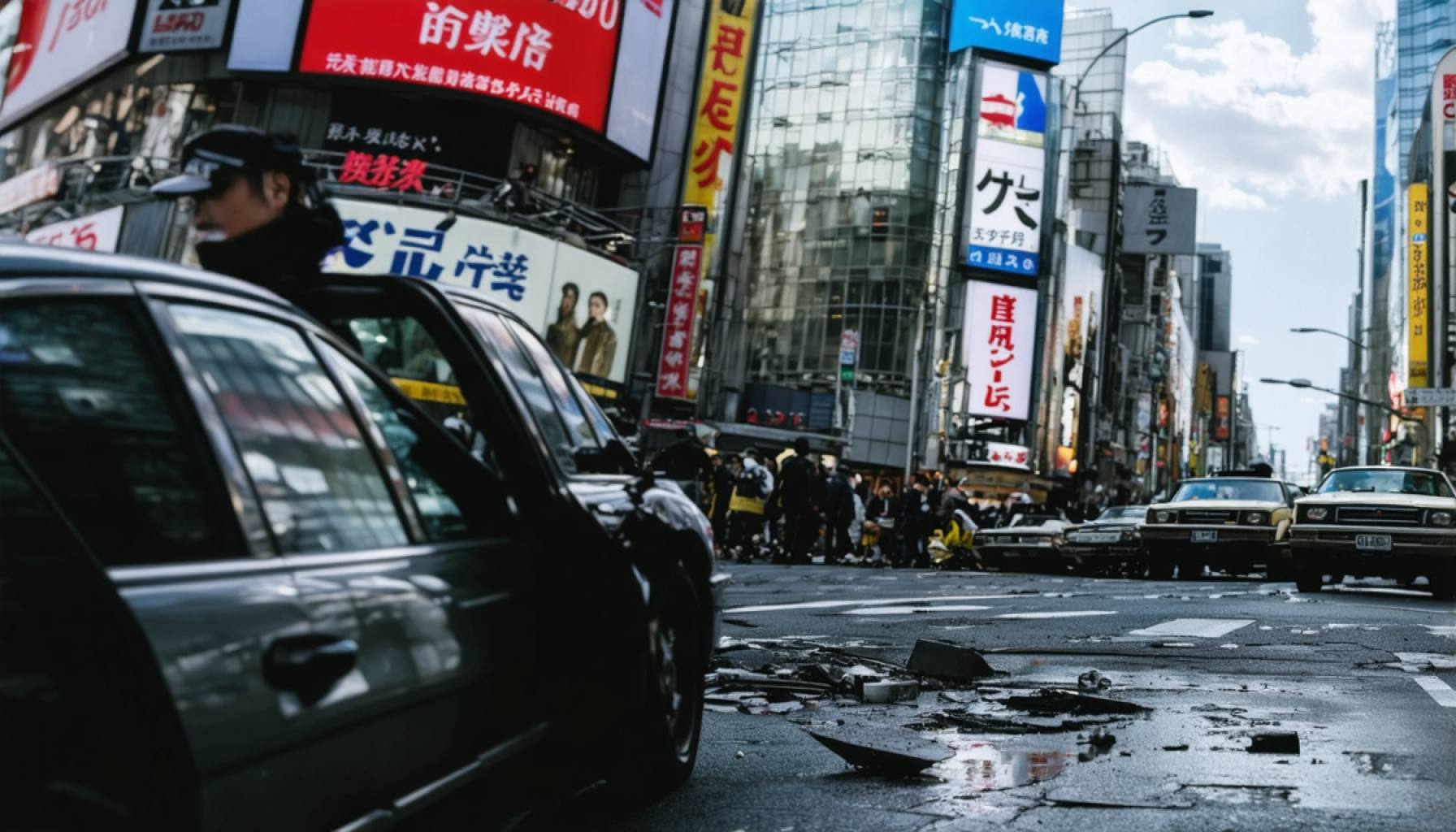- An ordinary morning in Tokyo turned tragic when Airi Sato, 22, was attacked in a usually quiet area near Takadanobaba Station.
- The attacker, a man in his 40s, confessed to the crime, claiming it stemmed from a dispute over an unpaid loan.
- The incident highlights Tokyo’s delicate balance between perceived safety and unexpected vulnerability.
- Sato’s livestream inadvertently provided the assailant with an opportunity, underscoring the importance of vigilance.
- The attack blends chilling reality and technology, as the assailant filmed the aftermath with his smartphone.
- This tragic event serves as a somber reminder for Tokyo to continuously strive for heightened safety measures.
March 11 began like any other morning in the bustling metropolis of Tokyo. Below the shadowy skeleton of Takadanobaba Station, a quiet street wound its way through the lesser-known corners of the city, steeped in a silence that typically invited peace but on this fateful day masked a malevolent act.
Airi Sato, 22, navigated this tranquil stretch, footsteps syncing with the hum of the city awakening around her. Fate intervened unexpectedly; a man swiftly approached, his intentions hidden beneath the cloak of familiarity. With a sudden, brutal force, he attacked Sato with a knife, transforming the serene path into the stage of a horrific crime. Strikes rained down upon her in a frenzied blur, cutting through the calm like a knife through paper.
Witnesses recall the chilling aftermath: Sato lay motionless, while her assailant, unflinchingly brazen, pointed his smartphone toward her face. His actions halted only upon the arrival of the police, when he openly confessed to the assault, a dark shadow accompanying his every word.
In an unyielding metropolis like Tokyo, surprises rarely manifest—yet that morning, a collective gasp echoed throughout the city’s inhabitants. The tragic event shook Tokyo’s core, reminding all of the precarious balance between safety and vulnerability, a balance often taken for granted in one of the world’s safest cities.
Investigators have since identified the attacker as a man in his 40s, who claims a dispute over an unpaid loan led to his sinister escalation—though his frenzied actions speak a language of their own. As the investigation unfolds, the authorities wrestle with questions of intent and sanity, pivotal factors that will determine the true weight of justice owed to Airi Sato.
Sato’s final moments, captured in the light of a livestream she conducted at the time, may have inadvertently offered the assailant the proximity he needed to strike. Her tragic passing punctuates a hard truth: vigilance remains imperative, even amidst the seeming safety of Tokyo’s labyrinthine streets.
The haunting symmetry of the attacker wielding his smartphone in one hand and a knife in the other serves as a grim testament to the blurred edges of reality and technology. In the aftermath, Tokyo reflects—a city of steadfast spirit, yet sobered by the harsh reality that security is not a mere given but a consistent pursuit.
The attack reverberates as both warning and lesson, urging caution in a city that, despite its accolades for safety, must continually strive to protect its own, ensuring the echo of tragedy fades as justice prevails.
The Shocking Incident in Tokyo: Lessons on Safety and Technology’s Role in Modern Crimes
Exploring the Incident
On March 11, a routine morning in Tokyo turned tragic as Airi Sato, a 22-year-old woman, became the victim of a brutal knife attack in the quiet vicinity of Takadanobaba Station. This incident thrust a harsh spotlight on issues surrounding personal security, the impact of modern technology, and the complexities of urban life.
What Happened?
Airi Sato was attacked by a man in his 40s, reportedly over a financial dispute related to an unpaid loan. During the assault, the perpetrator shockingly used his smartphone to record the aftermath, adding a troubling layer of technology’s involvement in the crime.
Broader Implications and Discussions
1. Safety in Tokyo: Although Tokyo is renowned for its safety, this incident is a stark reminder that no place is entirely immune to violence. It highlights the need for continued vigilance and awareness, especially in urban settings where anonymity often prevails.
2. Technology’s Dual Role: The attack illustrates the intersecting paths of real-world violence and digital actions. Smartphones, while powerful tools for connection and documentation, can also be manipulated in distressing ways. This dual role demands a reconsideration of privacy, consent, and the ethics of public recording.
3. Psychological Impact: The psychological ramifications of witnessing or being aware of such crimes cannot be underestimated, affecting the perceived safety and mental well-being of residents and tourists alike.
Lessons and Safety Tips
1. Stay Alert: Always be aware of your surroundings, even in seemingly safe areas. This includes avoiding distractions like using smartphones while walking.
2. Emergency Preparedness: Learn basic self-defense techniques and keep emergency contacts readily accessible.
3. Engage with Community: Participate in community safety programs or neighborhood watch schemes that foster a collective sense of responsibility and vigilance.
Industry Trends and Insights
1. Surveillance Technology: There’s a growing trend in the use of surveillance technology and AI in crime prevention, with more cities investing in sophisticated systems to monitor and protect public spaces.
2. Mental Health Support: Increasing accessibility to mental health resources is crucial for aiding individuals affected by violence and fostering resilient communities.
Call to Action
– Advocate for Safety Measures: Support initiatives that enhance public safety through better lighting, increased police presence, and community programs.
– Embrace Mindful Technology Use: Reflect on personal technology habits and understand the privacy implications of digital actions.
Conclusion
This tragic event serves as a cautionary tale, urging Tokyo and cities worldwide to balance urban life with proactive safety measures, ensuring tragedies like this become increasingly rare. Witnessing such an event can be shocking, yet it offers valuable lessons on the intersection of safety, technology, and community responsibility.
For further information on crime prevention and urban safety initiatives, visit the official Tokyo Metropolitan Government site at Tokyo Metropolitan Government.
